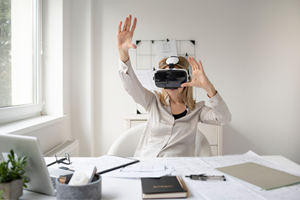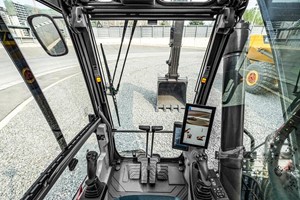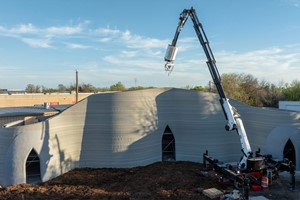Virtual reality (VR) has emerged as a revolutionary technology that is transforming various industries, and architecture is no exception. With its immersive and interactive capabilities, VR is reshaping the way architects design and plan urban spaces. This article explores the intersection of virtual reality and architecture and delves into the impact it has on design processes and urban planning.
Understanding the Intersection of Virtual Reality and Architecture
In recent years, virtual reality has become an integral part of architectural design, allowing architects to visualize and experience their creations in a whole new way. The evolution of VR in architectural design has been remarkable, with advancements in hardware and software pushing the boundaries of what is possible. With VR, architects can create virtual environments that mimic real-world settings, enabling them to assess scale, lighting, and materials with a level of detail that was previously unimaginable.
Moreover, VR offers a unique opportunity to immerse clients and stakeholders in the design process. By using VR headsets, individuals can explore virtual architectural spaces, walking through buildings and experiencing the layout firsthand. This level of engagement enhances communication, enabling architects to gather valuable feedback and make informed decisions that lead to better design outcomes.
The Evolution of Virtual Reality in Architectural Design
When virtual reality first entered the architectural scene, it was primarily used for creating visualizations and walkthroughs. Architects could present their designs through computer-generated renderings, providing clients with a glimpse into what the finished project would look like. However, with the continued advancement of VR technology, architects can now go beyond static images and offer fully immersive experiences.
Today, architects can create virtual environments that simulate real-world conditions, such as weather patterns, lighting conditions, and acoustics. This level of realism enables architects to evaluate the feasibility of their designs and identify potential issues before construction begins. By immersing themselves in a virtual world, architects can make more informed decisions and refine their designs to ensure optimal functionality and aesthetics.
For example, imagine an architect designing a new office building. With VR technology, they can create a virtual environment that replicates the lighting conditions at different times of the day. They can walk through the virtual space, observing how the natural light interacts with the building's interior, and make adjustments to optimize the lighting design. This level of detail and realism allows architects to create spaces that are not only visually appealing but also functional and comfortable for the occupants.
Edited by Yehya Aoun











